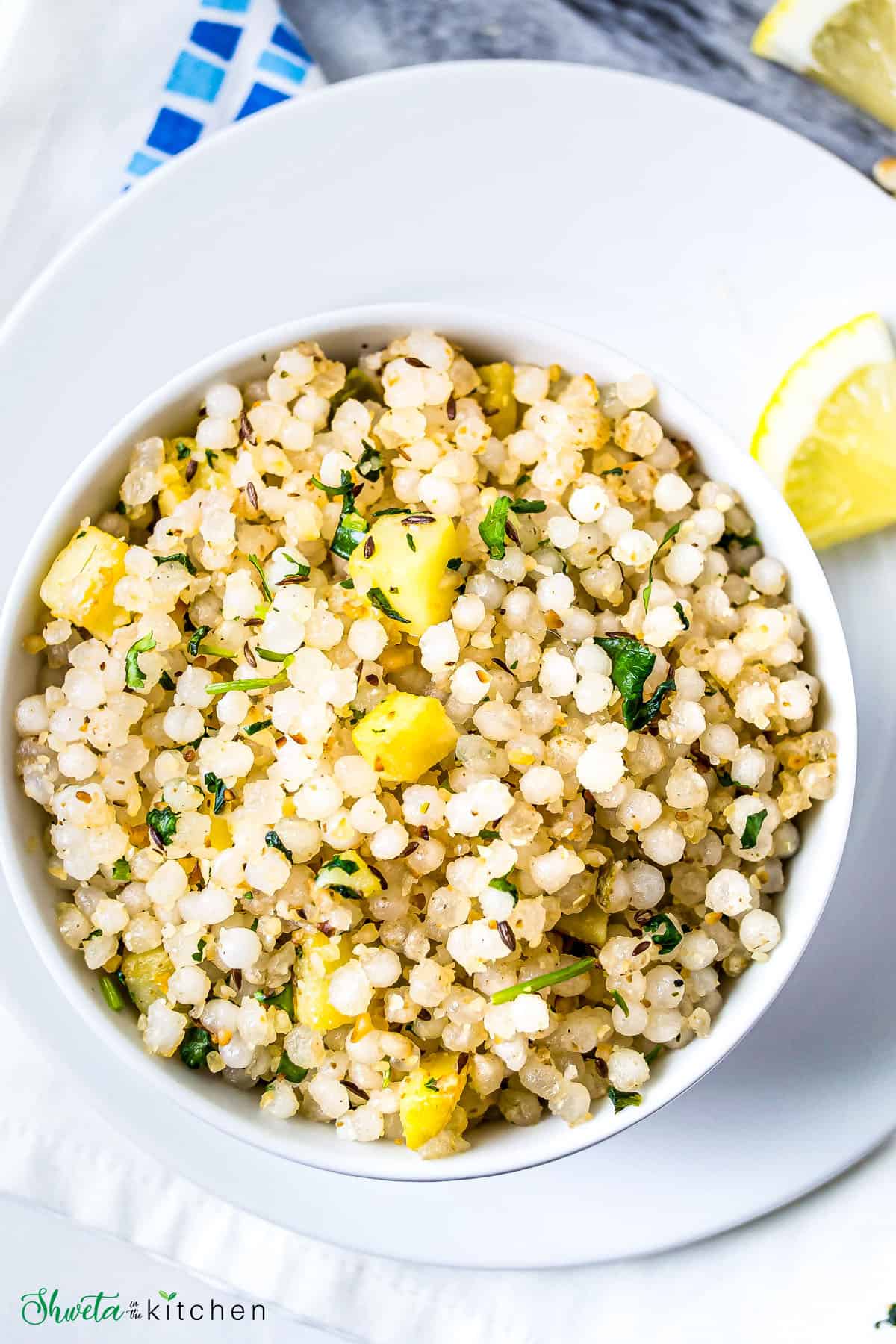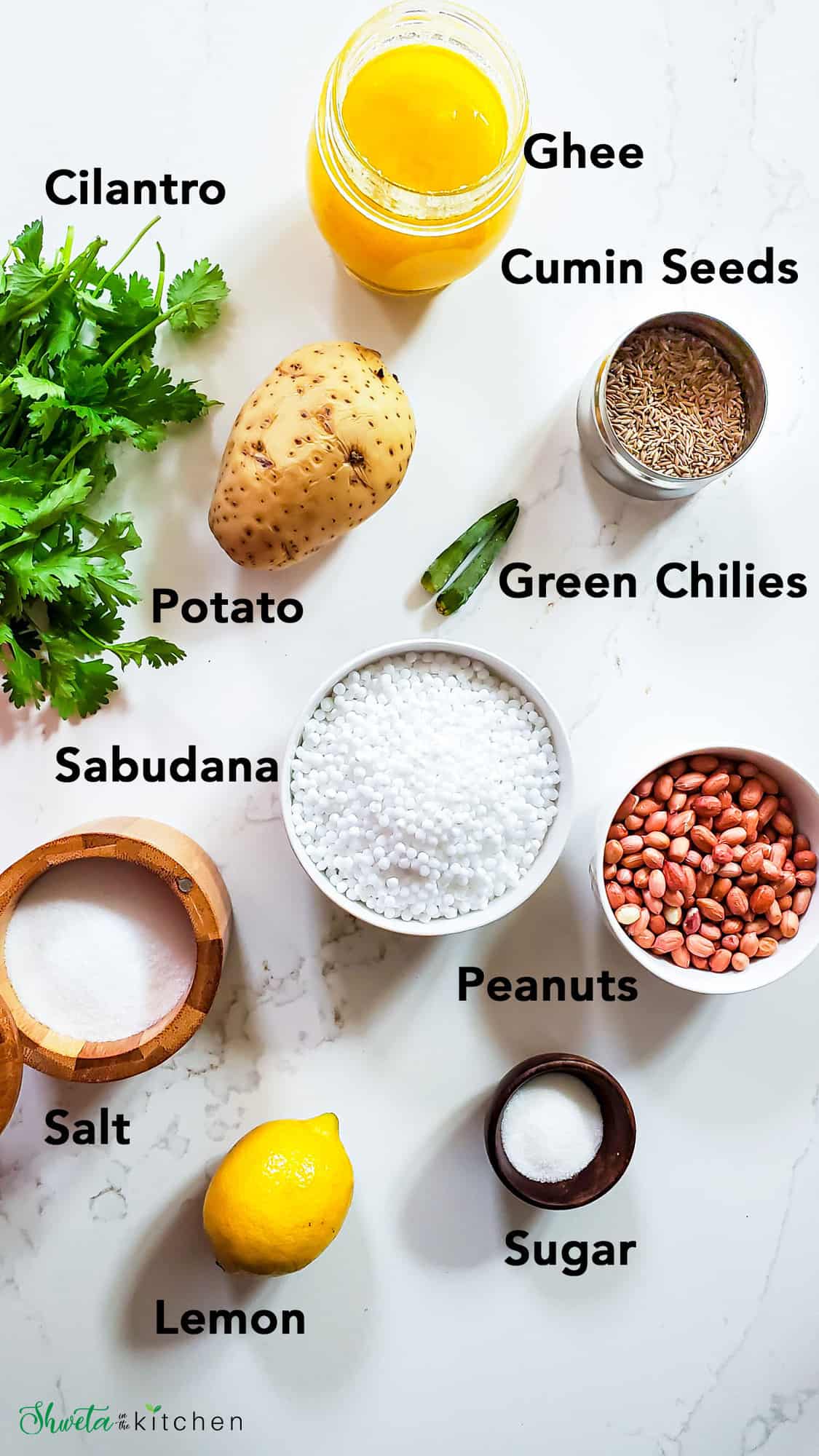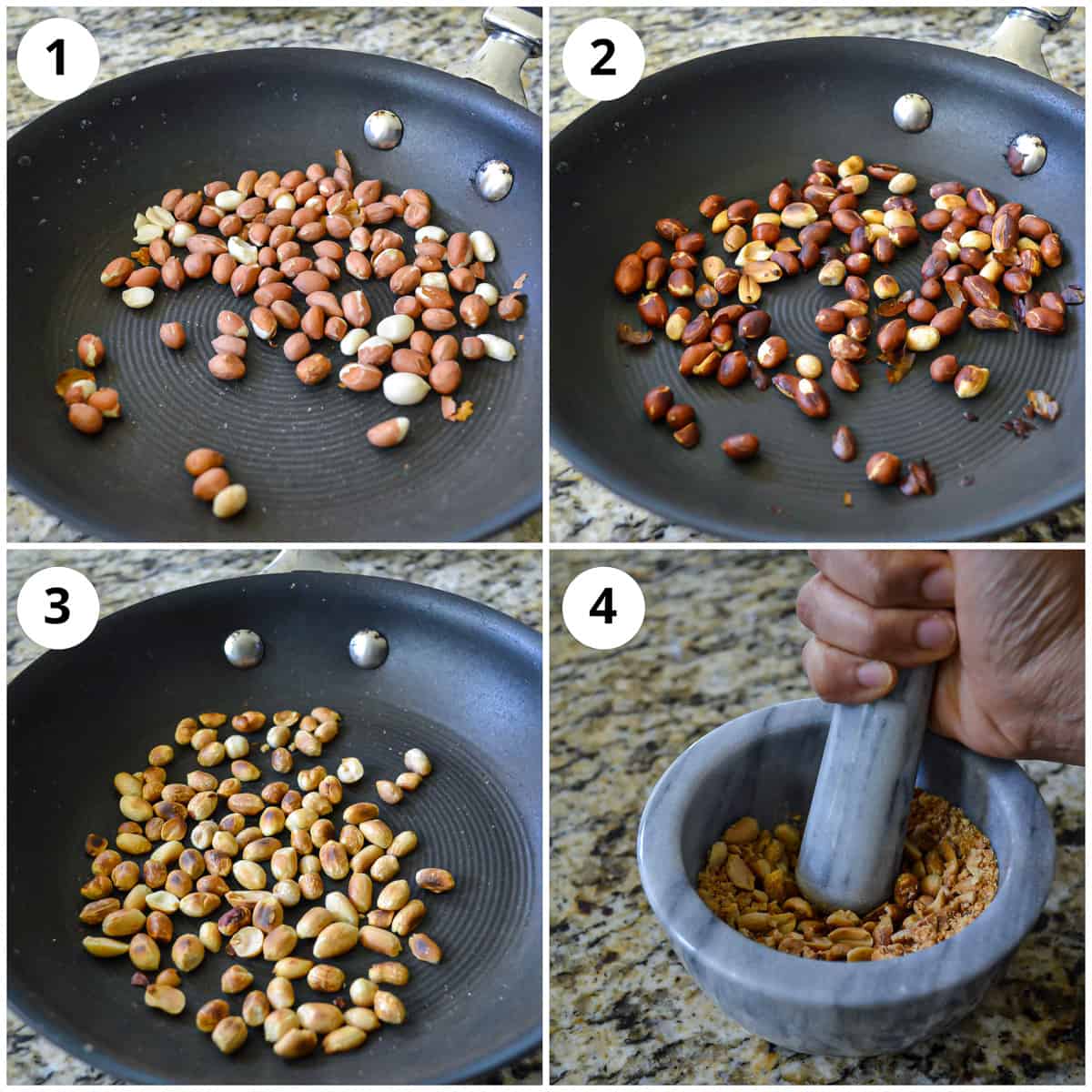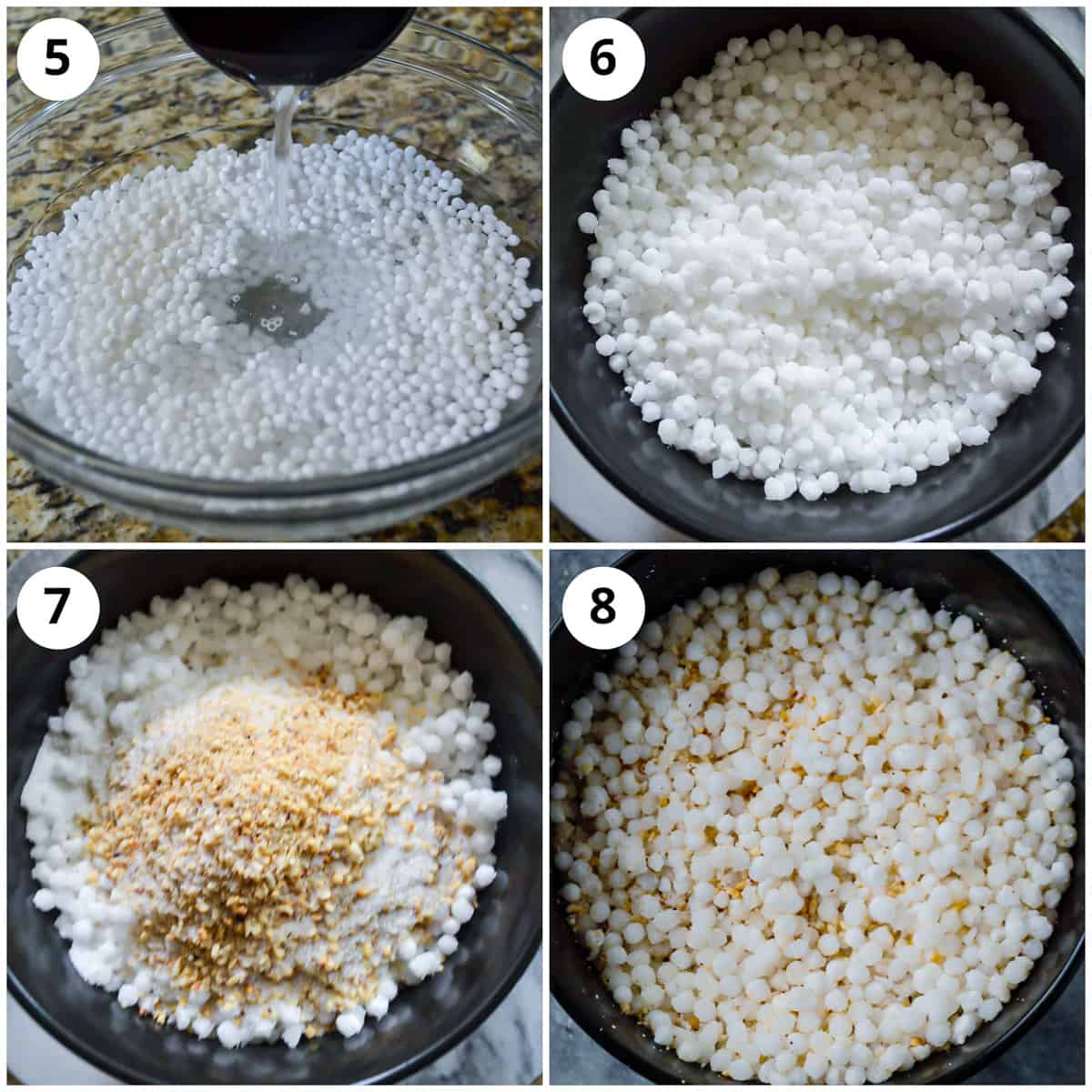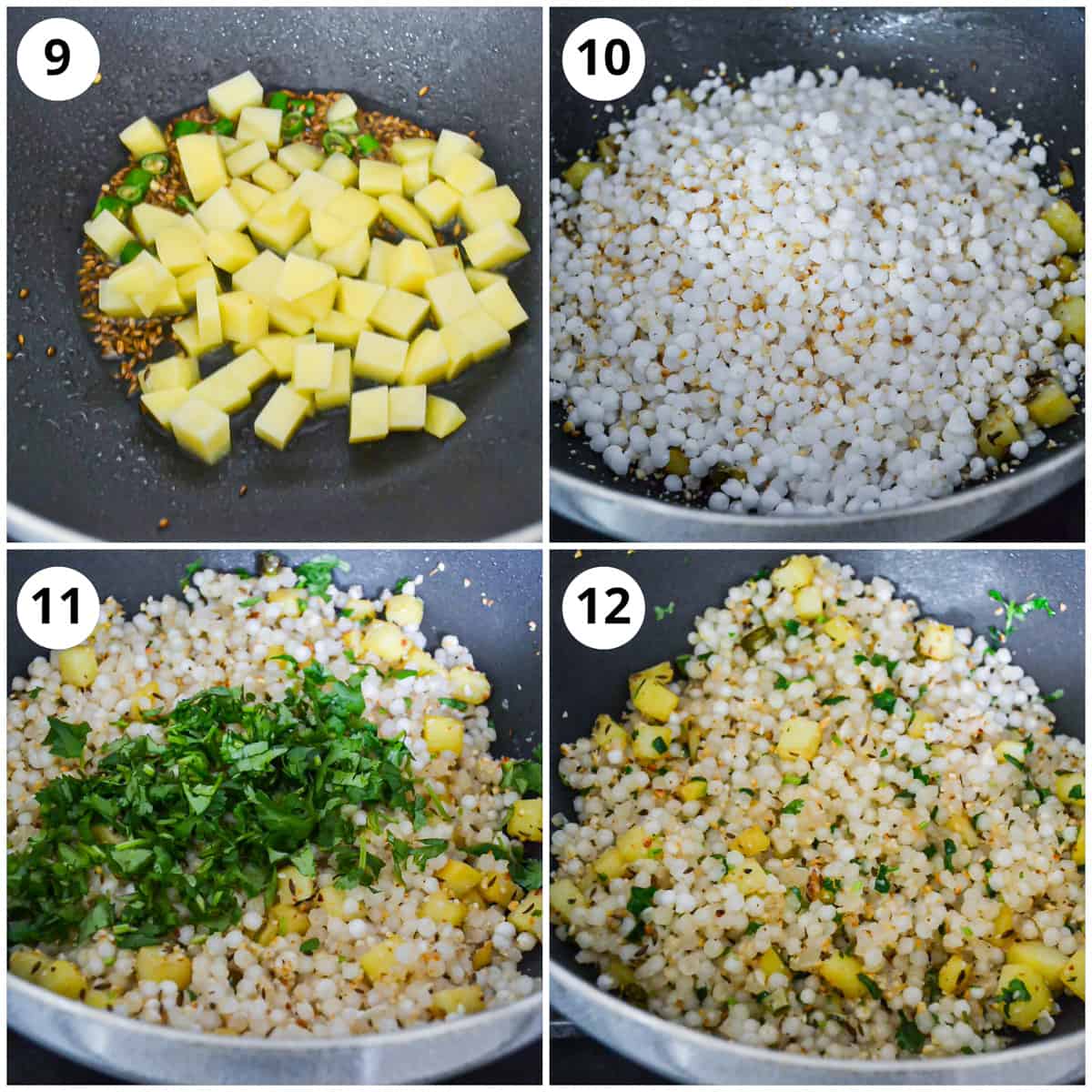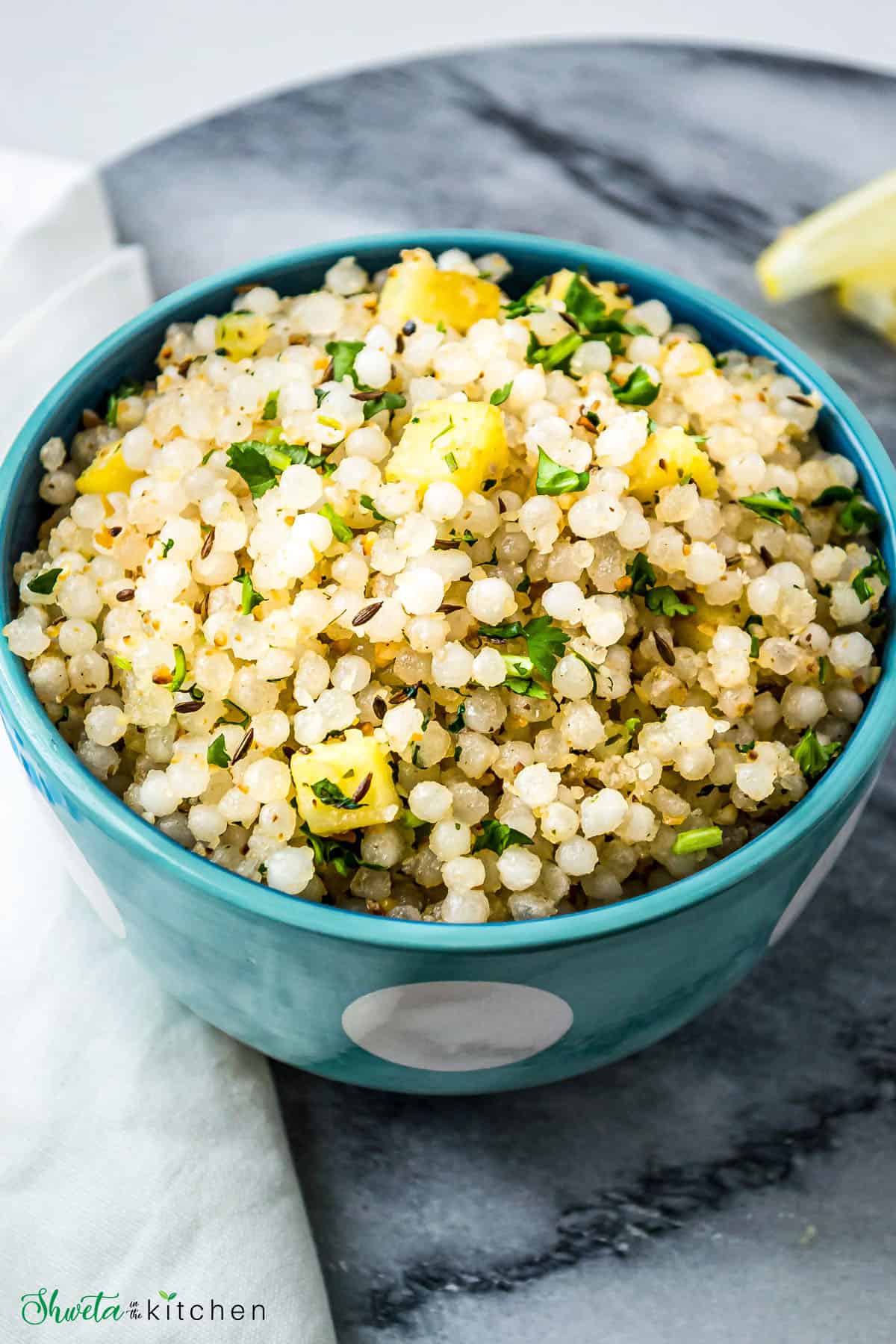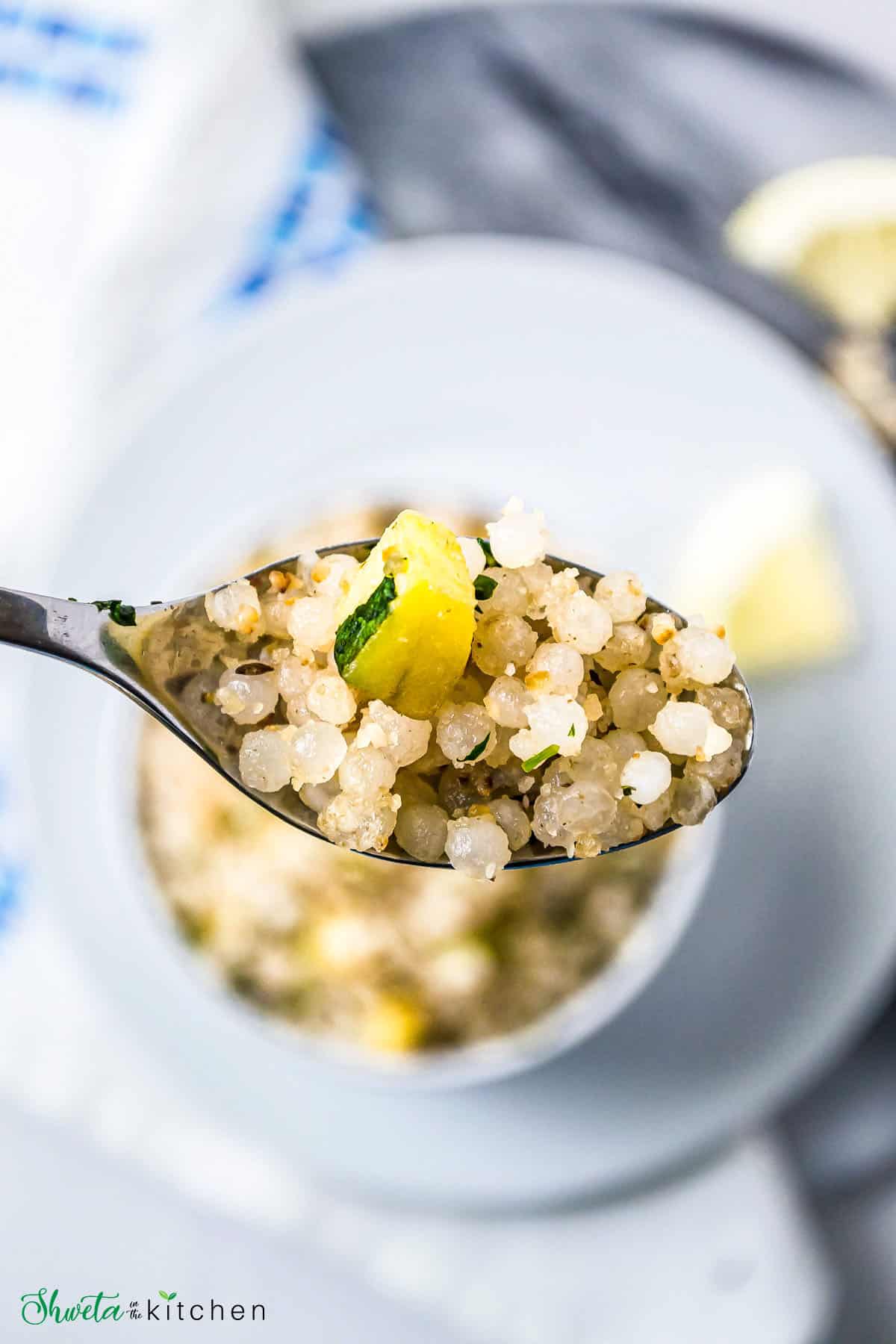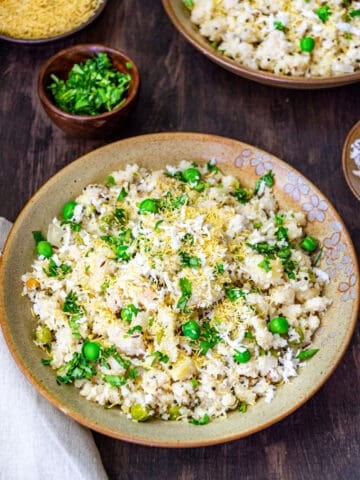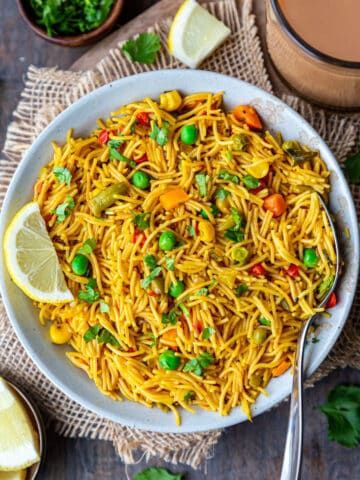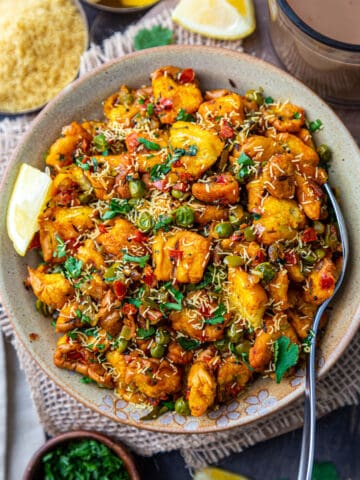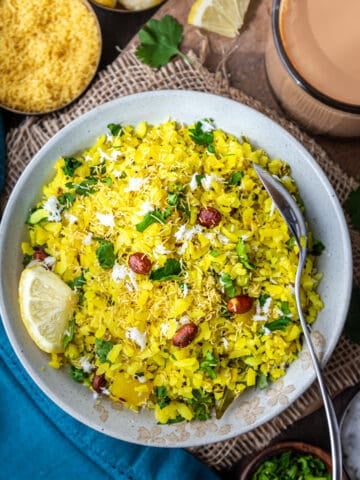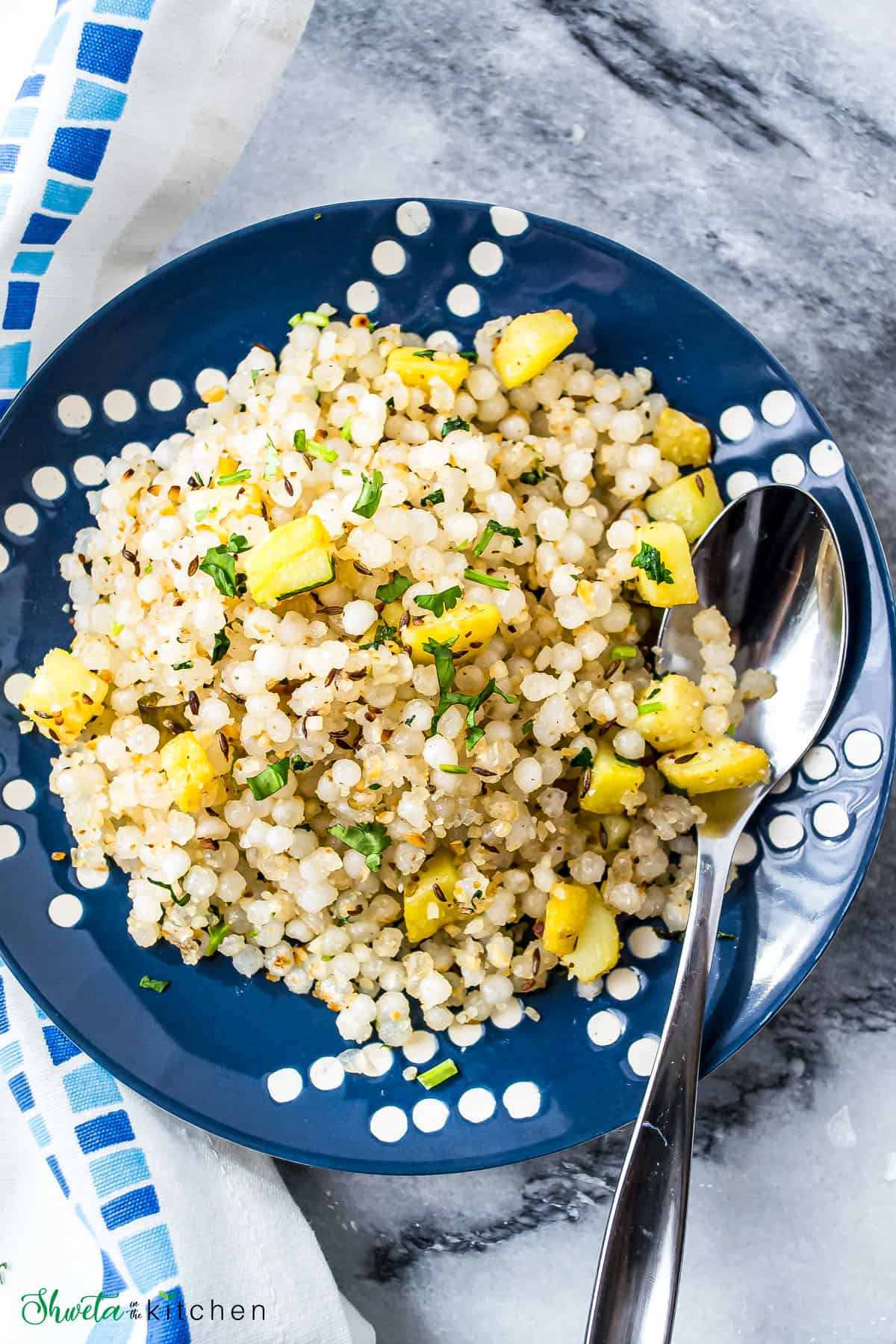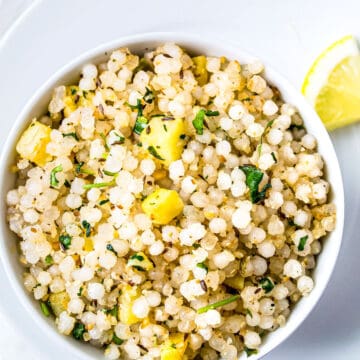I am sharing how to make a non-sticky Maharashtrian-style sabudana khichdi recipe that is delicious, soft, and not chewy, or mushy.
It is a very simple recipe that requires just a handful of ingredients but if not made right it turns out sticky, mushy, or goopy. But not anymore!
I’m sharing a foolproof recipe with all the tips I’ve learned from Mom and through my experience so you can make the perfect, non-sticky Sabudana Khichdi every single time!!
If you love sabudana like me, definitely check out these other favorite sabudana recipes Sabudana Vada and Sabudana Kheer.
It is also known as Sabudanyachi khichdi in Marathi, Sabudana ki khichdi in Hindi, and Tapioca Pilaf in English.
This sabudana dish is also a popular fasting food in India during the festival season of Navratri, Shivratri, Ekadashi, and other Hindu fasting days.
I grew up eating the simple Maharashtrian Sabudana Khichdi recipe where the soaked sabudana is tempered with ghee, cumin seeds, green chilies, potatoes, and crushed roasted peanuts, seasoned with salt, lemon juice, and garnished with cilantro. It is easy and absolutely delicious!
Although this recipe for tapioca khichdi is easy and simple, it does require some preparation in terms of soaking the sabudana and proper cooking techniques to make sure the khichri doesn’t clump or become mushy.
So here are all the tips and tricks to make the best Sabudana Khichdi at home that is fluffy, and soft (not chewy or sticky).
Peanuts: I’ve used raw peanuts with skin which I roast, peel, and then crush. To quicken the process, you can prep the peanuts ahead of time or buy the already roasted unsalted peanuts. If you are allergic, you can make Sabudana Khichdi without peanuts but otherwise highly recommend adding peanuts.
Potato: Potatoes are optional so you make Sabudana Khichdi without potato too. I love adding potatoes to my Khichdi especially during fasting since they provide volume, making it more filling. You can use boiled potatoes to cut down on cooking time. With raw potatoes, cut them into smaller cubes to help them cook faster.
Spices and seasonings: I only use cumin seeds (zeera), salt (sendha namak), sugar, and green chilies for making sago khichdi. These are the basic spices safe to be consumed during fasting (vrat/upvas) but otherwise, you can also add turmeric, red chili powder, curry leaves, etc.
Ghee: For cooking, I prefer making sabudana khichdi with Ghee (Indian clarified butter) and highly recommend it. It gives it great flavor. You can use oil to keep it vegan.
Others: Lemon juice and cilantro leaves provide the finishing touches. I use cilantro only during non-fasting days.
Please refer to the recipe card for exact measurements of ingredients.
How to Make Sabudana Khichdi (Stepwise Photos)
Making Sabudana Khichdi
9 - In a pan, heat ghee on medium heat. Add the cumin seeds and allow them to sizzle for a few seconds.
1 - Heat a pan on medium-low heat, add the peanuts, and dry roast them until they are slightly golden, crunchy, and aromatic.
2 - Turn off the heat and allow it to cool completely. I leave mine in the pan for another 15-30 minutes and stir in between to prevent peanuts from burning. Then transfer on a plate to cool completely.
3 - Peel the skin off by rubbing the peanuts between your palms (it’s easier to do so after roasting). Store them in an airtight container until ready to use. This can be done ahead of time.
4 - When you are ready to make khichdi, coarsely crush the roasted peanuts in a mortar pestle or food processor. I prefer a coarse consistency so it’s a mix of peanut powder and bits of peanuts.
5- Rinse the sabudana well (4-5 times) till the water runs almost clear. This is important to get rid of all the starch. Then soak them in 2 cups of water for 2 hours. They will double in size.
6 - Drain the remaining water, and cover the sabudana overnight or at least for 4-5 hours. I usually refrigerate them overnight. In the morning, take them out of the fridge. They should be completely dry with no water left.
Fluff the sabudana pearls using a fork to separate any that may stick without breaking them. This helps in giving the perfect texture to these pearls.
To check if the sabudana is soaked properly, press the pearls between your thumb and index finger. It should mash easily. If the center feels hard, soak in 2-3 tablespoons of water for another 30 minutes and test again.
You can also soak the sabudana ahead of time, drain, and refrigerate for 3-4 days.
7 - To these fluffy, soaked sabudana pearls, add the coarsely ground peanuts, salt, and sugar. Mixing ground peanuts with sabudana helps to keep the pearls separate.
8 - Mix well and keep aside.
Stir in green chili, potatoes, and a sprinkle of salt. Mix well and cook covered for 5-7 mins (or until potatoes are cooked). Stir intermittently to prevent the potatoes from sticking. Alternately use boiled potatoes to cut down the cooking time.
10 - Once the potatoes are cooked, turn the heat to medium-low and add the sabudana peanut mixture to the pan. Mix well with a light hand so the sago pearls don’t break. Cover and cook for 5-7 mins stirring intermittently.
Make sure not to overcook, over mix the khichdi, or else it will turn sticky.
When the sabudana pearls turn from white to transparent you know your khichdi is ready. Turn off the heat
11 & 12 - Add lemon juice and coriander (cilantro) leaves and give it a final mix.
Perfectly tasty, soft, non-sticky Sabudana ki Khichdi is ready!!
Serving Suggestion
Serve Sabudana khichdi hot on its own or with a bowl of yogurt and/or fruits on the side. Pair it with chai for that wholesome breakfast or snack. You can also serve it with some green chutney on non-fasting days.
Storage Instructions
You can store leftover khichdi in an airtight container in the fridge for 3-4 days. Reheat in the microwave for a few seconds and serve. Alternately use leftover khichdi to make Sabudana Vada.
Variations
I usually skip curry leaves and cilantro when making sabudana khichdi as a fasting meal. To keep this recipe vegan, skip ghee and use neutral cooking oil. Mix in grated coconut for a touch of sweetness and flavor.
Tips for Soft, Non-sticky Sabudana Khichdi
Rinse the sabudana well until water runs clear to get rid of all the starch which will prevent stickiness later. Soak sabudana in just enough water for 2 hours. (1 cup sago soak in 2 cups). Soaking in a lot of water will oversoak them and they will end up being gluey on cooking. Drain the water completely, and refrigerate overnight or place covered on the countertop. Refrigeration allows the excess water to be soaked by sabudana and end result is fluffy tapioca pearls. If you don’t have the time to refrigerate overnight, do it for at least 2-3 hours or spread them on a plate or paper towel to dry them up further. Soaking time may vary, depending on the quality of the sabudana so experiment with your variety. Check soaked sabudana by pressing between your thumb and index finger. It should mash easily. Fluff the soaked sabudana gently with a fork to separate any clumps. Grind the roasted peanuts coarse so there are bits of peanuts as well as a peanut powder. Adding ground peanuts helps keep the sabudana pearls separate by absorbing excess moisture and making khichdi non-sticky. Use a non-stick pan or a well-seasoned skillet to avoid sticking. Don’t overcook. Sabudana cooks fast so overcooking and too much stirring will result in sticky and goopy (mushy) khichdi. You can tell sabudana is cooked when it turns from white to transparent color. Don’t cook beyond this point. Some khichdi lumps are expected and normal since it is starch after all. Just fluff with a fork and it should separate easily. Use enough Ghee to make khichdi as it prevents the tapioca pearls from sticking. Skip ghee to make it vegan and use just oil. Hope you enjoy this Sabudana Khichdi Recipe!! If you give this recipe a try, please rate it by clicking stars ⭐️ on the recipe card. Thank you ❤️! You can also follow me on Facebook | Instagram to see what’s cooking in my kitchen!!
Recipe Card
Update Notes: This post was originally published on Feb 25, 2015, but was republished with, step-by-step instructions, and tips in September of 2021.
